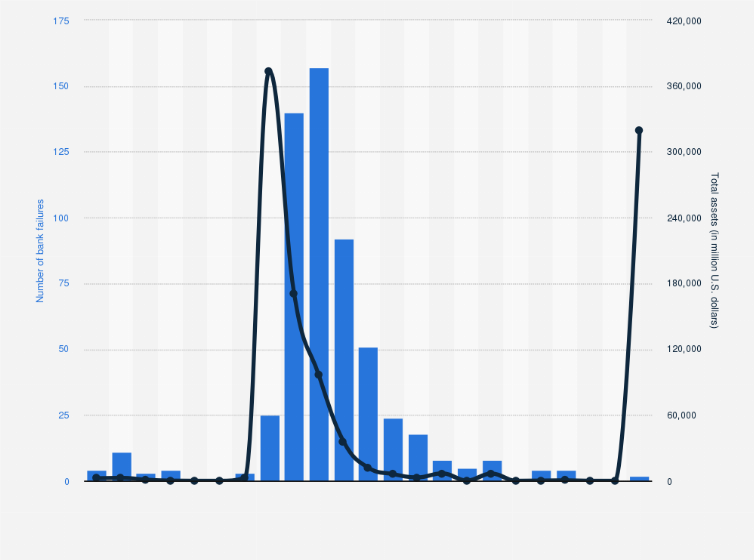Bitcoin Falters Amid Anti-Bank Sentiment: Why?

As US banks continue to fail, expect Bitcoin (BTC) to skyrocket in value and usage. But reality paints a different picture.
This article takes a closer look at the complexities of this digital currency’s struggle as it grapples with regulatory challenges, environmental criticism and growing competition.
The unfulfilled promise of a digital alternative?
Despite a rising tide of anti-bank sentiment, Bitcoin’s ascent remains stubborn. As the public’s faith in traditional financial institutions wanes, Bitcoin, the original cryptocurrency, should be soaring. However, a confluence of factors, including regulatory uncertainty, environmental concerns and rival digital currencies, have hindered progress.
The financial crisis of 2008, followed by a series of banking scandals, has shaken public confidence in traditional banks. Consequently, many have sought alternative financial solutions, which should have propelled BTC into the mainstream. As a decentralized currency that operates outside the realm of central banks and governments, Bitcoin promised to democratize finance and empower individuals.
Yet, despite its potential, Bitcoin is struggling to gain widespread adoption. Regulatory uncertainty continues to cause concern among potential users and investors. Authorities and financial regulators around the world are grappling with the implications of digital currencies, imposing varying degrees of restrictions and guidelines. For example, in the United States, the SEC’s ongoing deliberations on the classification of cryptocurrencies as securities or commodities create a climate of doubt.
Furthermore, environmental concerns have cast a shadow over Bitcoin’s promise. The mining process, which requires significant computing power, uses enormous amounts of energy, leading to a significant carbon footprint.
Bitcoin Competition and Energy Consumption
This has led to criticism from environmentalists and the wider public, who are increasingly aware of climate change and its consequences. The University of Cambridge estimates that Bitcoin’s annual energy consumption exceeds countries such as Argentina or the Netherlands.
Finally, the rise of rival digital currencies has compounded Bitcoin’s challenges. As newer cryptocurrencies, such as Ethereum, Solana, and Cardano, are adopted, each provides unique features and benefits that cater to different user needs. Some offer faster transaction speeds, lower fees or improved privacy, providing formidable competition for Bitcoin. These alternatives have fragmented the market, diluting Bitcoin’s once dominant position.
As a result, Bitcoin’s growth remains stagnant despite the growing disillusionment with traditional financial institutions. Its failure to capitalize on this opportunity can be attributed to the complex interplay of regulatory uncertainty, environmental concerns, and the expanding landscape of digital currencies.

Regulatory roadblocks
A major factor inhibiting Bitcoin’s growth is the ever-present shadow of regulatory uncertainty. Governments around the world are grappling with the implications of this decentralized currency, trying to strike a balance between innovation and security. Consequently, BTC’s potential remains mired in a quagmire of doubt, deterring mainstream adoption.
Take China, for example, where the government has implemented a blanket ban on cryptocurrency transactions. Such a hostile environment limits Bitcoin’s expansion, leaving investors and users concerned.
The green dilemma
Environmental concerns surrounding Bitcoin mining pose another obstacle. The energy-intensive process of validating transactions and securing the network has drawn widespread criticism, with critics claiming that Bitcoin’s energy consumption rivals that of entire nations.
This weakens the cryptocurrency’s image and discourages potential supporters.
As a result, more environmentally friendly alternatives have emerged, such as Ethereum’s transition to a proof-of-stake consensus mechanism, which significantly reduces energy use. In this green-conscious world, Bitcoin’s environmentally friendly mining process puts it at a disadvantage.
Crypto Competition: The Battle for Supremacy
As the pioneer of decentralized digital currencies, Bitcoin still reigns supreme. However, the emergence of a number of alternative cryptocurrencies, each boasting distinct advantages and features, has diluted Bitcoin’s dominance. From privacy-focused Monero to the fast, low-cost transactions of Litecoin, these rivals are chipping away at Bitcoin’s market share.
The proliferation of decentralized finance (DeFi) projects, built mainly on Ethereum’s blockchain, is further eroding Bitcoin’s stronghold. These innovative platforms offer financial services without intermediaries, addressing some of the concerns that led to anti-bank sentiment.
The Future: Potential Catalysts for Bitcoin’s Resurgence
Despite these setbacks, Bitcoin is far from doomed. Several factors can drive its growth, pushing it back into the limelight. For example, the ongoing development of the Lightning Network promises to improve Bitcoin’s scalability, facilitating faster and cheaper transactions. This improvement could revive enthusiasm for digital currency.
Furthermore, as central banks explore the issuance of digital currencies (CBDC), public interest in cryptocurrencies may increase. Bitcoin, as the most recognizable name in the space, could benefit from this increased attention.
Finally, the institutional use of cryptocurrencies as a store of value or hedge against inflation may lend credibility to Bitcoin. As more companies MicroStrategy add Bitcoin to their balance sheets, the cryptocurrency’s reputation could improve, spurring further investment.
The Million-Dollar Question
The current state of BTC raises a crucial question: if not now, when? Will the cryptocurrency ever reach the dizzying heights of a $1 million valuation by the end of 2023, as some are predicting? While its path remains uncertain, Bitcoin’s future depends on its ability to overcome the challenges it faces today.
To succeed, Bitcoin must navigate the murky waters of regulatory uncertainty, adapt to a more environmentally conscious world, and outmaneuver its competitors. Only then can it capitalize on anti-bank sentiment and secure its position as a viable alternative to traditional finance.
Disclaimer
In accordance with Trust Project guidelines, this feature article presents the opinions and perspectives of industry experts or individuals. BeInCrypto is dedicated to transparent reporting, but the views expressed in this article do not necessarily reflect the views of BeInCrypto or its employees. Readers should verify information independently and consult with a professional before making decisions based on this content.























